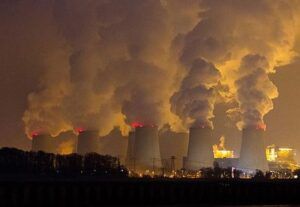China built the equivalent of two new power plants per week last year, a report has found, despite the energy regulator saying no new coal power plants would be permitted solely for the purpose of bulk power generation.
A report published today by Global Energy Monitor (GEM) and the Centre for Research on Energy and Clean Air (CREA) found 50 GW of coal power capacity started construction in China in 2022, a more than 50% increase from 2021, with many of these having their permits fast-tracked in order to start construction quickly.
In fact, last year new permits for coal plants in China reached their highest level since 2015.
“China continues to be the glaring exception to the ongoing global decline in coal plant development,” said Flora Champenois, research analyst at GEM.
“The speed at which projects progressed through permitting to construction in 2022 was extraordinary, with many projects sprouting up, gaining permits, obtaining financing and breaking ground apparently in a matter of months.”
The provinces permitting a large amount of new coal power plants have justified the projects as supporting power capacity to ensure grid stability and the integration of renewable energy.
The report said this doesn’t hold up, however, because the plants are intended to run at baseload utilisation, and these specific provinces are laggards in growing clean energy generation to meet their demand growth.
Last year China experienced electricity shortages and a rapid increase in electric peak loads, caused by droughts and heatwaves. But Lauri Myllyvirta, lead analyst at CREA, called using new coal plants as a solution to this “short-lived and under-utilised malinvestments”.
This is because, at the same time as coal plants are being built, China is excelling in clean energy construction. A record 125 GW solar and wind capacity was added in China in 2022, breaking the previous record from 2020.
The rapid growth in clean power generation in China could in fact mean these new coal plants go under-utilised but impact the clean energy transition because the owners of the plants have an interest in protecting their assets and avoiding a rapid coal phase-out. Power generation companies are not keen to build new coal-fired power plants because coal-fired power generation is significantly lossmaking at current coal and power prices.
“To meet China’s goal of peaking CO2 emissions, the most urgent milestone is to scale up investments in clean power generation to cover all of power demand growth, which means declining demand for power generation from coal,” Myllyvirta said.
The report recommends increasing investment in clean power generation to fully meet growth in electricity demand and stop increasing bulk power generation from coal, as well as increasing investment in electricity storage, flexibility and transmission within grid regions, which will all play a part in avoiding the need for more coal plants.
